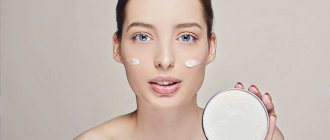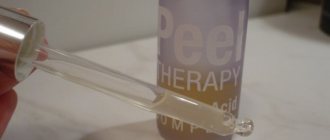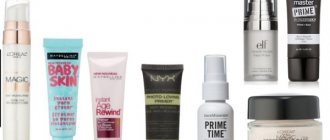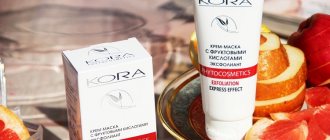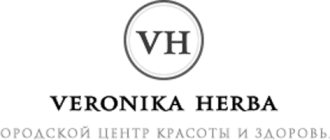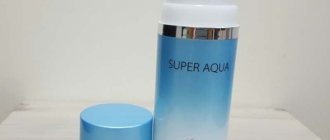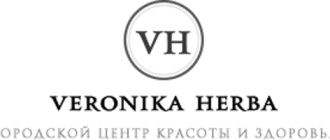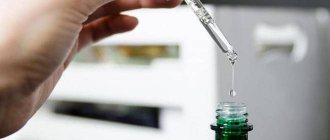How AHA acids affect the skin
The effect of peeling containing AHA acids on the skin:
- the active component is not addictive, destroys the connection between skin cells, due to which the dead layer is painlessly removed;
- additional ingredients in combination with AHA acids help cleanse pores of impurities, remove blackheads and relieve inflammatory processes;
- the active substance prevents the spread of harmful microorganisms, normalizes metabolic processes at the cellular level and replenishes the lack of oxygen.
The main advantage of AHA cleansing peeling is a non-toxic procedure that affects only the treated area of the skin, without having any effect on the entire body.
What is pH peeling
The pH indicator is very important when choosing a chemical peel and is no less relevant than the concentration of the acids included in its composition.
pH is an indicator of the acidity of the drug; the lower the pH, the greater the acid content in the solution, therefore, the result of the procedure is more pronounced. But unlike the concentration of acids, pH does not irritate the skin.
Example: the concentration of AHA or BHA acids: the higher the %%, the deeper they penetrate into the deeper layers of the skin. In high concentrations they can cause tissue damage, even lysis.
Indications for use
Indications for the use of peeling containing AHA acids:
- loss of elasticity of the dermis;
- acne;
- acne and post-acne;
- hyperpigmentation;
- age and expression wrinkles;
- uneven complexion;
- dry skin, flaking;
- excessive production of subcutaneous sebum.
At a young age, peeling with a small concentration of AHA acids helps get rid of rashes typical of teenagers, and in more mature years it helps to slow down the aging of the skin.
Precautionary measures
For peeling, you can only use pre-diluted AHA acids - the consistency should be selected by a specialist.
When cleaning yourself, it is important to ensure that the composition does not get on the mucous membrane, and select preparations with a concentration of alpha hydroxy acids of no more than 15% - a larger percentage of this ingredient can harm the skin if the cleaning technique is incorrect.
Contraindications
Contraindications to peeling with the addition of AHA acids:
- individual intolerance to the active or auxiliary components;
- overly sensitive skin;
- dermatitis or eczema;
- carrying a baby or breastfeeding period;
- exacerbation of chronic diseases;
- deterioration of the immune system;
- disturbances in the functioning of the nervous system;
- the presence of ulcers or unhealed wounds;
- active form of herpes;
- recent tan
Before performing peeling, you need to do a test to identify an allergic reaction to the selected drug. To do this, a small amount of the mixture is distributed on the wrist or the bend of the elbow - if after 15 minutes there is no burning, irritation or swelling, you can use a peeling agent.
Side effects and complications
The following side effects may occur after ANA acid peeling:
- slight burning sensation;
- itching;
- feeling of tightness;
- peeling;
- swelling;
- redness.
Expert opinion
Ekaterina Dudikova
Dermatologist, cosmetologist
If you follow the procedure protocol and recommendations for caring for the dermis during the rehabilitation period, the described symptoms disappear on their own within a few days.
If the cleansing composition is overexposed or the concentration of the active substance is incorrectly selected, complications such as burns, severe swelling, severe pain or pronounced red spots may occur. In this case, you need to visit a cosmetologist or dermatologist who will select restorative therapy.
AHA, BHA, PHA and vitamin acids for facial care: applications and life hacks
Acids in cosmetics are important helpers for solving many problems. They moisturize and gently exfoliate the face, which compares favorably with scrubs that can injure the skin.
In this article we provide a detailed overview of the most popular acids: who they are suitable for, how to use them correctly and in what products they can be found. You can read about how they work in our other material.
ANA-ACIDS FOR FACE
Suitable for problematic or aging skin.
Main types:
- Glycolic acid prevents acne, reduces wrinkles, evens out skin tone and texture and increases sensitivity to the sun, so using Sunscreen is a must.
- Lactic acid is derived from milk, so it has moisturizing properties that other exfoliating acids don't have. It reduces hyperpigmentation and acne marks, and smoothes out wrinkles. This acid is suitable for almost everyone.
- , mandelic acid penetrates the skin more slowly. It cleanses and exfoliates without being harsh, and helps treat acne and lighten age spots. Suitable for people with sensitive or thin skin.
- Ferulic acid fights free radicals, reduces wrinkles, protects and restores cell membranes, has a brightening effect, and makes age spots less noticeable.
AHA acids, contrary to many stereotypes, work precisely on the surface of the skin, without penetrating into the pores.
ECOCOCO Face wash with coconut oil and shea butter
KANGAWOO Night cream adding radiance to improve complexion “LIME PEARL”
GALENIC PURETE SUBLIME Skin Renewal Serum
COLLISTAR Facial Concentrate with Pure Actives Glycolic Acid
KORRES Face mask with AHA acid
PHA-ACIDS FOR FACE
Suitable for sensitive skin. It can be taken by those who are afraid of strong acids and are looking for a more delicate product.
- Gluconolactonic acid exfoliates dead skin cells, lightens age spots and post-acne, protects against free radicals, moisturizes, evens out skin texture.
- Lactobionic acid has similar properties to gluconolactonic acid, but works superficially and does not penetrate deep into the skin due to its larger molecules.
THALGO Intensive Renewal Night Serum
THANK YOU FARMER Peeling cream with glacier water for face
PAYOT Mattifying day cream gel PATE GRISE against imperfections
KAT BURKI Enzyme-based PH-regulating facial product
COLLISTAR Anti-aging night cream mask for face and neck
KAT BURKI Bio-correcting face cream with vitamin B
KAT BURKI Nourishing intensive facial elixir
TOO COOL FOR SCHOOL Set of wet facial wipes
BHA-ACID FOR FACE
An ideal solution for problematic skin with excess sebum and a large number of clogged pores.
BHA acid (also known as salicylic acid) fights rashes, is used in high concentrations to treat acne and post-acne, and lightens age spots. Interestingly, salicylic acid has an antibacterial effect, so products with this component will also be effective for inflammatory acne. The optimal concentration is 0.5-2%.
PLANETA ORGANICA 100% Natural deep cleansing face mask for oily and combination skin
ELIZAVECCA Toner with fruit acids
CLINIQUE Anti-inflammatory topical gel Anti Blemish Solutions
PAYOT Drying facial gel
AVENE Cleanance Deep Cleansing Mask
VITAMIN ACIDS FOR FACE
- Ascorbic acid (vitamin C) has a rejuvenating effect, as it enhances collagen production, lightens age spots and tightens pores.
- Lipoic acid (vitamin N) fights free radicals, stimulates collagen production and repairs damaged cells.
- Linoleic acid (vitamin F) treats skin rashes, reduces melanin production, preventing the appearance of age spots, and starts the process of cell renewal.
AHC Premium Mask cellulose face mask with vitamin C
PAYOT Facial gel for radiant skin My Payot
ORLANE Vitamin C concentrate for the face for radiant and youthful skin
KAT BURKI Anti-aging facial complex with retinol and vitamin C
KORRES Two-phase facial product with vitamin C Wild Rose
It is important to remember that improper use of AHA, BHA, PHA and vitamin acids can lead to skin irritation, dryness and increased photosensitivity. To prevent a negative reaction, it is necessary to pay attention to the concentration of acid in the cosmetic product and be sure to follow the instructions indicated on the packaging. You can also read our other material, in which we talked in detail about what mistakes can be made in using acids.
Lifehack. If suddenly the manufacturer did not indicate the concentration of acids, you can determine it by studying the list of ingredients: the closer to the beginning the acid is indicated, the greater its concentration in the product.
The ideal option is to combine home care and salon treatments. Recommendation: a couple of weeks before going to the cosmetologist, start using cosmetics that contain acids. This will prepare the skin for the more powerful effects of professional products.
Contraindications
Among the main contraindications for the use of AHA, BHA, PHA and vitamin acids are pregnancy and lactation, infectious diseases, colds, as well as herpes, abrasions or other skin damage. You can check with your cosmetologist for a complete list of contraindications.
How to use products with acids?
- Acids can be found not only in cleansing gels, lotions and masks, but also in serums, creams and - now unexpectedly - even in foundations (most often containing hyaluronic acid, which moisturizes the skin).
- If you have never used products with AHA or BHA acids, you should not immediately rely on them. It is important to gradually prepare the skin for their effects to avoid reactions in the form of redness and peeling. Start using it several times a week, gradually increasing it to daily (in this case, the effectiveness is many times greater). And make sure that your other skincare products do not contain acids: if combined incorrectly, this can harm the skin.
- Not all cosmetic ingredients combine well with each other. In this material, we looked in detail at which products should be used at the same time, and which are better separated by time of use.
And finally, let’s dispel the most popular myth about acids – they should not be used in the summer. This is not true at all: they can be used all year round, but using a cream with SPF (required!).
Cover photo: @anyaholdstock
Technology
Peeling for cleansing and rejuvenating the skin with AHA acids is applied in several stages:
- Preparatory. Surface impurities and makeup residues are removed from the skin using a professional product. Next, the skin is degreased and disinfected - this prevents the risk of inflammation spreading and minimizes the chances of infection entering the dermis.
- Basic. The cleansing composition is evenly distributed over the epidermis and left for the time calculated by the specialist.
- Neutralizing. Peeling is removed using a neutralizer; washing it off with plain water can cause a burn.
- Final. The skin is treated with moisturizer and sunscreen.
In the case of cleaning in a salon, the cosmetologist performs the first cleaning with a composition with a small content of fruit acids, increasing their concentration with each procedure - thus preventing injury to healthy skin. Lasting results can be achieved after a course of 6–10 sessions with an interval between cleanings of at least a week.
Why peeling pH is important
The concentration of hydrogen ions in a solution (pH indicator) affects the physicochemical properties and biological activity of proteins and nucleic acids, therefore pH is a parameter of exceptional importance for chemical peeling.
There is a close connection between the pH of the peel and its effect on the rate of skin cell renewal, exfoliation, stimulating effect on cellular renewal, etc.
Example : Glycolic acid at a pH above 4 does not have an exfoliating and stimulating effect, BUT it has a moisturizing effect.
Home Recipes
The best recipes for making home peelings are highlighted:
- Citric. Mix 1 tbsp. l. rosehip oil, 1 tbsp. l. olive oil and 1 tbsp. l. lemon juice. Heat the resulting composition and apply it to the skin using a cosmetic disc or cotton swab. Leave the product for 15 minutes, rinse with water.
- Orange. Mix 1 tbsp. l. orange pulp, ground coffee and honey. Apply to face with massage movements, leave for 10 minutes, rinse with water.
- Tropical. Grind 15 grams in a blender. pulp of kiwi, pineapple and banana, apply to the dermis for 10 minutes and rinse.
For preventive purposes, peelings with alphahydroxy acids should be used once every 10–15 days, for intensive therapy – 2–3 times a week for a month.
For peeling, you can also choose a ready-made mask with fruit (AHA) acids from the list below:
- Bark. Helps narrow pores, normalize subcutaneous sebum production and eliminate minor blemishes. It is not recommended to use the product to cleanse sensitive skin.
- Skinlite. Suitable for any type of dermis, evens out the color and texture of the face, giving the skin a velvety feel.
- Kosmoteros. Eliminates impurities from deep layers, helps get rid of acne, and has a rejuvenating effect. The mask is recommended for cleaning problematic dermis.
You should select a professional product together with a cosmetologist - this will reduce the risk of deterioration of the initial condition of the epidermis.
Important facts and recommendations
Many people are interested in the question of the age at which facial peeling with AHA acids can be performed. Cosmetologists say that the procedure can be carried out in adolescence and throughout life. The only difference is that for young skin the procedure is carried out to improve the condition of problematic skin, and for mature skin it is to correct and eliminate signs of aging. Taking into account existing skin problems and individual characteristics, the procedure can be carried out either as a course or as a one-time procedure.
To reduce rashes and get rid of oily skin for a person under the age of 25, it is enough to carry out the procedure once every few months. If he has the opportunity, then you can take the full course, this will only improve the effect. People in the age category of 25-30 years can activate skin reserves in one procedure. To smooth out facial wrinkles, 2-3 sessions a year may be enough. To prevent and correct signs of aging, a person aged 30 to 45 years is recommended to take a short course of 3-5 procedures, followed by maintenance procedures once every 1-2 months. If a person does not have this opportunity, then it is recommended to perform peeling with AHA acids once every 1-2 months, combining it with various anti-aging procedures. This is especially important in the autumn-winter period. This applies to those people who do not have pronounced skin problems. If the problem is pigment spots or noticeable age-related changes, then taking a peeling course will be effective. From the age of 45 years, superficial peeling is recommended in a short course. Most often it is performed as preparation for a mid-peel. If, at the age of 20 to 30 years, a person has completely healthy skin, then the procedure is not necessary.
Opinion of cosmetologists
- Anastasia Zaslavskaya, dermatologist, cosmetologist: “Peeling with AHA acids will help you forget about age-related changes for a long time and cleanse even deep impurities. The procedure rarely leads to side effects or complications; the main thing is to follow all recommendations for caring for the dermis during its recovery. I remind my clients not to forget to use nourishing and soothing products every day, and to always use high-protection sunscreen before going outside.”
- Elena Apostolyuk, cosmetologist: “Preliminary preparation plays a big role in the obtained effect of cleansing ANA with acids. A few weeks before visiting a cosmetologist, you need to stop tanning and treat your skin daily with a professional product with a minimum concentration of fruit acids.”
Carrying out the procedure
Before carrying out ANA peeling, you should follow some recommendations. This is necessary in order to get the maximum effect from the procedure and not cause harm to the skin. About two weeks before the procedure, you should reduce your exposure to the sun and avoid visiting solariums. If a person has such an opportunity, then some preparation can be done. The bottom line is that a person should use a cleansing gel, lotion or cream with acids, which a cosmetologist can recommend. Pre-peeling preparation will help to even out the stratum corneum, prepare the skin for AHA peeling and improve the effect of the procedure.
It is worth noting that this can be replaced with several peeling procedures with a small concentration of acid: glycolic or mandelic. After the procedure, it is important to use sunscreen with an SPF factor of at least 30, even if the weather outside is not very sunny. Also, you should not plan a vacation by the sea or visit a solarium for at least the next 2-3 weeks after peeling.
Superficial peeling with fruit acids often takes a short time - about 30 minutes, and consists of several steps:
- The cosmetologist must thoroughly clean the skin and prepare it for peeling using special products.
- After this, he must apply acid (gel) to his face and leave it on the skin for about 2-10 minutes. During this period, a person may feel a slight burning and tingling sensation.
- After this, a neutralizer should be applied to the skin to stop the peeling.
- The last stage is removing all products from the skin and applying post-peeling cream.
User reviews
- Katya, 23 years old: “I was treated for acne for a long time, and when I achieved what I wanted, I was faced with post-acne. I tried to get rid of this defect using various means, but nothing helped. Not long ago I found out that you can take a course of cleansing with fruit acids, so I decided to try it. At the appointment, the cosmetologist determined that I needed to do 8 procedures and said that she would start with a composition of 15%, gradually increasing it. During the entire course I did not experience any discomfort, rehabilitation lasted almost 2 weeks - during this time there was peeling and redness. When the skin recovered, I saw no trace of my illness.”
- Sveta, 28 years old: “Cleansing with fruit acids perfectly eliminates facial and shallow age wrinkles, evens out the complexion and normalizes the functioning of the sebaceous glands. Every year, for 3 years, I do a course of 5 procedures - the skin looks at least 10 years younger.”
- Elena, 32 years old: “I cleanse my face with orange at home - it helps my face stay wrinkle-free and maintain a healthy skin color. Most often I do this mask 3-5 days before important events, and I always look impeccable at them.”
Properly performed peeling with AHA acids will help you get rid of inflammation, small scars and unevenness, and also maintain youthful skin for a long time.
Rating
AHA acids - what are they and what are they for?
The abbreviation AHA has already become synonymous with fruit acids, which got their name due to the fact that they are extracted from fruits and berries. But this is not entirely true. Fruit acid is just one of the varieties of alpha hydroxy acids (the same abbreviation AHA on the packaging). Alpha hydroxy acids include fruit acids (malic, citric, tartaric) and lactic, glycolic and almond.
The mechanism of action for all acids is the same. It is essentially based on a chemical burn. The extent to which the acid will damage the skin depends on what variety we have in front of us and what its concentration and pH (acid-base balance) are. The more concentrated the acid, the higher its acidity, and the more aggressive its effect on the skin. But the action of almost any peeling is based on the damage process. Acids dissolve dead epidermal cells, activate the formation of new ones, launch the process of intensive cleansing and renewal of the skin, and also improve the penetrating effect of other products.
Benefits of acids for skin:
- Exfoliate dead particles and launch restoration processes in cells
- Improves the functioning of the sebaceous glands
- Moisturizes and normalizes the hydrolipid barrier
- Smoothes out small wrinkles and reduces the depth of facial expressions
- Strengthens collagen and elastin fibers
- Have anti-inflammatory and antioxidant effects
- Lighten hyperpigmentation
- Evens out the relief and complexion
- Reduces the appearance of scars and post-acne
What are the types of AHA acids for skin?
- Apple juice (mainly extracted from apples, but also found in other fruits and berries, for example, grapes, tomatoes) - suppresses the activity of harmful bacteria, cleanses, and evens out.
- Lemon (found in citrus fruits, cranberries, currants and some fruits) - helps get rid of dead cells, dissolves sebum and impurities in the pores. Not recommended for use in active sun, as it increases sensitivity to UV rays.
- Pyruvic acid (found in the acidic juice of many plants, but more often extracted from grapes) - valued for its pronounced anti-aging effect.
- Glycolic (usually obtained from green grapes or sugar cane) - smoothes wrinkles, activates the production of collagen and elastin, and cleanses.
- Lactic (formed during lactic acid fermentation of sugars, present in the body naturally) - suitable for use in summer, moisturizes, soothes, and has a slight exfoliating effect.
- Almond (extracted by hydrolysis from bitter almond kernels) is the softest, as it works on the surface of the epidermis.
